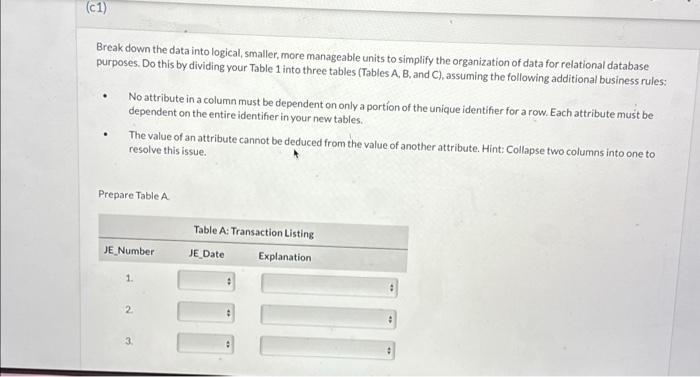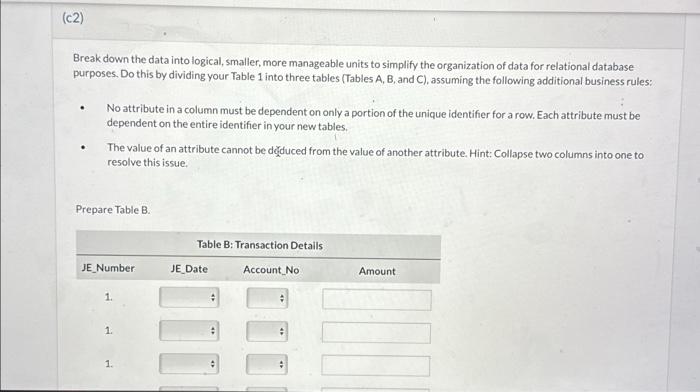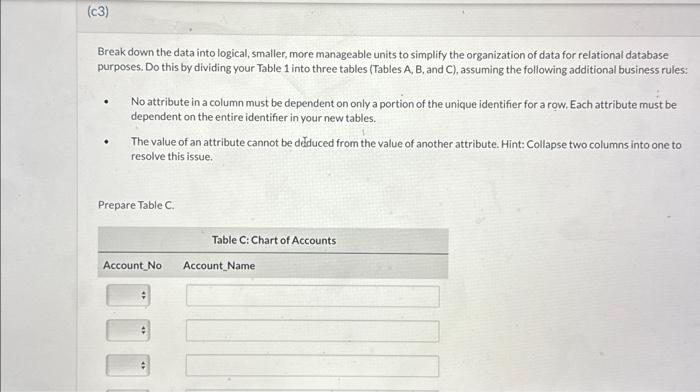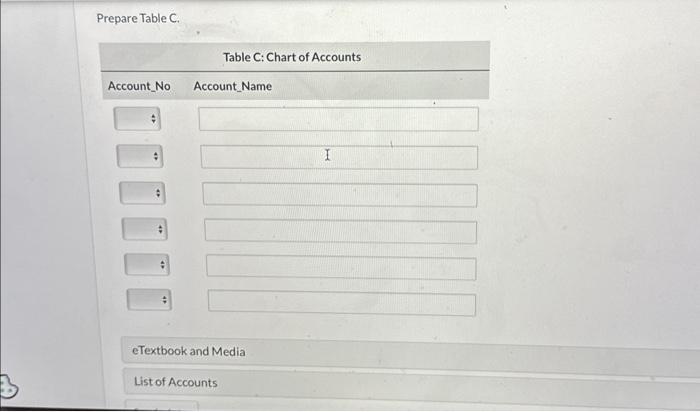Please i need help on C1 C2 & C3 thank you
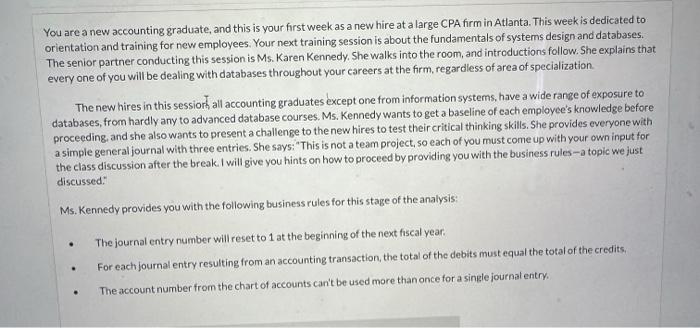
You are a new accounting graduate, and this is your first week as a new hire at a large CPA firm in Atlanta. This week is dedicated to orientation and training for new employees. Your next training session is about the fundamentals of systems design and databases. The senior partner conducting this session is Ms. Karen Kennedy. She walks into the room, and introductions follow. She explains that every one of you will be dealing with databases throughout your careers at the firm, regardless of area of specialization. The new hires in this sessior, all accounting graduates except one from information systems, have a wide range of exposure to databases, from hardly any to advanced database courses. Ms. Kennedy wants to get a baseline of cach employee's knowledge before proceeding, and she also wants to present a challenge to the new hires to test their critical thinking skills. She provides everyone with a simple general journal with three entries. She says: "This is not a team project, so each of you must come up with your own input for the class discussion after the break. I will give you hints on how to proceed by providing you with the business rules-a topic we just discussed: Ms. Kennedy provides you with the following business rules for this stage of the analysis: - The journal entry number will reset to 1 at the beginning of the next fiscal year. - For each journal entry resulting from an accounting transaction, the total of the debits must equal the total of the credits. - The account number from the chart of accounts can't be used more than once for a single journal entry. 2. 2. 3. 3. Break down the data into logical, smaller, more manageable units to simplify the organization of data for relational database purposes. Do this by dividing your Table 1 into three tables (Tables A, B, and C), assuming the following additional business rules: - No attribute in a column must be dependent on only a portion of the unique identifier for a row. Each attribute must be dependent on the entire identifier in your new tables. - The value of an attribute cannot be degduced from the value of another attribute. Hint: Collapse two columns into one to resolve this issue. Prepare Table B. able 1: General Journal Entries Break down the data into logical, smaller, more manageable units to simplify the organization of data for relational database purposes. Do this by dividing your Table 1 into three tables (Tables A, B, and C), assuming the following additional business rules: - No attribute in a column must be dependent on only a portion of the unique identifier for a row. Each attribute must be dependent on the entire identifier in your new tables. - The value of an attribute cannot be deduced from the value of another attribute. Hint: Collapse two columns into one to resolve this issue. Prepare Table A Prepare Table C. Traditional General Journal Entries \begin{tabular}{llrrr} \hline & & Account & Dr. & Cr. \\ & & 1001 & 5,000 & \\ & Accounts Receivable & 1004 & 70,000 & \\ & Sales & 4001 & & 75,000 \end{tabular} Credit sale with down payment 27/1/202X Cost of goods sold 500140,000 Inventory 1030 40,000 Cost of goods sold 37/2/202X Accounts Payable 20018,000 Cash 1001 8,000 Payment of invoice Break down the data into logical, smaller, more manageable units to simplify the organization of data for relational database purposes. Do this by dividing your Table 1 into three tables (Tables A, B, and C), assuming the following additional business rules: - No attribute in a column must be dependent on only a portion of the unique identifier for a row. Each attribute must be dependent on the entire identifier in your new tables. - The value of an attribute cannot be deduced from the value of another attribute. Hint: Collapse two columns into one to resolve this issue. Prepare Table C




